#wildlife rehab
Explore tagged Tumblr posts
Text
If you've ever shared "cute" pictures or videos from owl cafes, read this sobering reality check.
92 cafes across Japan hold over 1900 owls captive, simply for entertainment. This includes two species considered Near Threatened (Barred Eagle-owl Bubo sumatranus and Chaco Owl Strix chacoensis) and one Vulnerable species (Snowy Owl Bubo scandiacus). Moreover, there is a lack of transparency as to the origins of many of these owls, which may not all have been captive-bred. Species may have been mislabeled during import, and not all have paperwork showing they were legally imported, meaning there is a very good chance owl cafes feed into the illicit, non-sustainable wildlife trade.
What the article doesn't cover is how stressful these settings are for owls. They're bright, noisy, and confined, and the owls are exploited by the owners who allow untrained strangers to hold and pet them without consideration of the owl's well-being. The "break areas" where the owls can get away from direct contact are still within sight of patrons, meaning they are still subject to human contact.
Owls are not chickens. They are not domesticated birds that have spent thousands of years and thousands of generations in human company, being selectively bred for human-friendly, docile traits. Even a tame owl is still a wild animal with intact instincts that tell it it should be living a largely solitary life in a wide, open field or forest, not stuck in a small space with many other owls of assorted species and a bunch of people.
This also isn't a situation like falconry, where captive birds are given plenty of private space, and flown daily for physical and mental fitness. And a single cage may have dozens of owls, more than what limited staff can handle. Even if some of the birds are supposedly "rescues" (as at least one cafe's website claims), any reputable wildlife rescue is going to limit the contact between the animals and humans, and absolutely is not going to allow visitors to regularly take pictures with and handle the wildlife--even socialized, trained ambassador animals have very stringent limitations on direct contact.
So it's not at all unsurprising that an already highly unethical industry is likely contributing to the problem of questionable or illegal wildlife trade. This study is just one more piece of evidence suggesting that these cafes are anything but harmless, cute fun.
#owl cafe#owl cafes#owls#birds#birdblr#wildlife#wild animals#animal welfare#animal cruelty#wildlife trafficking#Japan#nature#animals#ecology#conservation#endangered species#wildlife rescue#wildlife rehab#not actually cute
2K notes
·
View notes
Text
Good News - June 15-21
Like these weekly compilations? Tip me at $Kaybarr1735! And if you tip me and give me a way to contact you, at the end of the month I'll send you a link to all of the articles I found but didn't use each week!
1. Victory for Same-Sex Marriage in Thailand

“Thailand’s Senate voted 130-4 today to pass a same-sex marriage bill that the lower house had approved by an overwhelming majority in March. This makes Thailand the first country in Southeast Asia, and the second in Asia, to recognize same-sex relationships. […] The Thai Marriage Equality Act […] will come into force 120 days after publication in the Royal Gazette. It will stand as an example of LGBT rights progress across the Asia-Pacific region and the world.”
2. One of world’s rarest cats no longer endangered
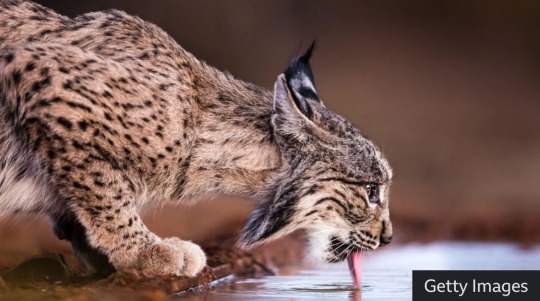
“[The Iberian lynx’s] population grew from 62 mature individuals in 2001 to 648 in 2022. While young and mature lynx combined now have an estimated population of more than 2,000, the IUCN reports. The increase is largely thanks to conservation efforts that have focused on increasing the abundance of its main food source - the also endangered wild rabbit, known as European rabbit. Programmes to free hundreds of captive lynxes and restoring scrublands and forests have also played an important role in ensuring the lynx is no longer endangered.”
3. Planning parenthood for incarcerated men
“[M]any incarcerated young men missed [sex-ed] classroom lessons due to truancy or incarceration. Their lack of knowledge about sexual health puts them at a lifelong disadvantage. De La Cruz [a health educator] will guide [incarcerated youths] in lessons about anatomy and pregnancy, birth control and sexually transmitted infections. He also explores healthy relationships and the pitfalls of toxic masculinity. […] Workshops cover healthy relationships, gender and sexuality, and sex trafficking.”
4. Peru puts endemic fog oasis under protection
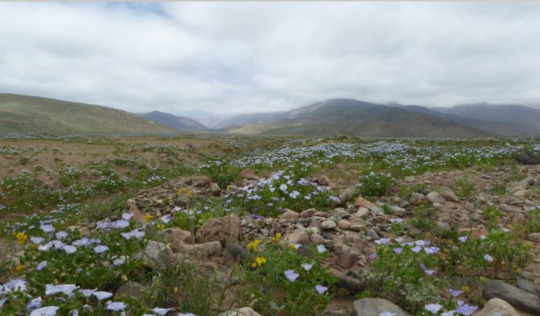
“Lomas are unique ecosystems relying on marine fog that host rare and endemic plants and animal species. […] The Peruvian government has formally granted conservation status to the 6,449-hectare (16,000-acre) desert oasis site[….] The site, the first of its kind to become protected after more than 15 years of scientific and advocacy efforts, will help scientists understand climatic and marine cycles in the area[, … and] will be protected for future research and exploration for at least three decades.”
5. Religious groups are protecting Pride events — upending the LGBTQ+ vs. faith narrative

“In some cases, de-escalation teams stand as a physical barrier between protesters and event attendees. In other instances, they try to talk with protesters. The goal is generally to keep everyone safe. Leigh was learning that sometimes this didn’t mean acting as security, but doing actual outreach. That might mean making time and space to listen to hate speech. It might mean offering food or water. […] After undergoing Zoom trainings this spring, the members of some 120 faith organizations will fan out across more than 50 Pride events in 16 states to de-escalate the actions of extremist anti-LGBTQ+ hate groups.”
6. 25 years of research shows how to restore damaged rainforest
“For the first time, results from 25 years of work to rehabilitate fire-damaged and heavily logged rainforest are now being presented. The study fills a knowledge gap about the long-term effects of restoration and may become an important guide for future efforts to restore damaged ecosystems.”
7. Audubon and Grassroots Carbon Announce First-of-its-Kind Partnership to Reward Landowners for Improving Habitats for Birds while Building Healthy Soils
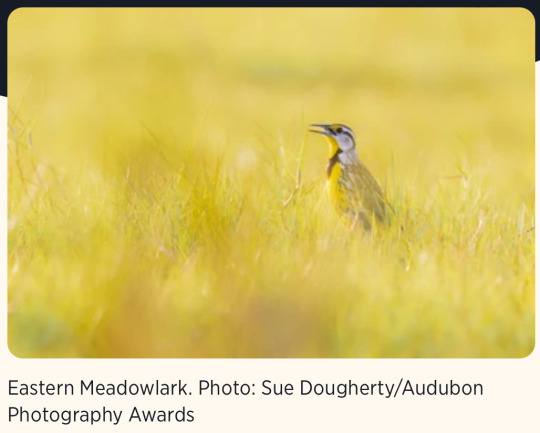
“Participating landowners can profit from additional soil carbon storage created through their regenerative land management practices. These practices restore grasslands, improve bird habits, build soil health and drive nature-based soil organic carbon drawdown through the healthy soils of farms and ranches. […] Additionally, regenerative land management practices improve habitats for birds. […] This partnership exemplifies how sustainable practices can drive positive environmental change while providing tangible economic benefits for landowners.”
8. Circular food systems found to dramatically reduce greenhouse gas emissions, require much less agricultural land
“Redesigning the European food system will reduce agricultural land by 44% while dramatically reducing greenhouse gas emissions from agriculture by 70%. This reduction is possible with the current consumption of animal protein. “Moreover, animals are recyclers in the system. They can recycle nutrients from human-inedible parts of the organic waste and by-products in the food system and convert them to valuable animal products," Simon says.”
9. Could Treating Injured Raptors Help Lift a Population? Researchers found the work of rehabbers can have long-lasting benefits

“[“Wildlife professionals”] tend to have a dismissive attitude toward addressing individual animal welfare,” [… but f]or most raptor species, they found, birds released after rehabilitation were about as likely to survive as wild birds. Those released birds can have even broader impacts on the population. Back in the wild, the birds mate and breed, raising hatchlings that grow up to mate and breed, too. When the researchers modeled the effects, they found most species would see at least some population-level benefits from returning raptors to the wild.”
10. Indigenous people in the Amazon are helping to build bridges & save primates
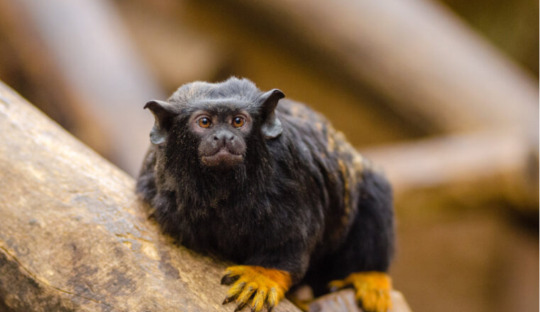
“Working together, the Reconecta Project and the Waimiri-Atroari Indigenous people build bridges that connect the forest canopy over the BR-174 road[….] In the first 10 months of monitoring, eight different species were documented — not only monkeys such as the golden-handed tamarin and the common squirrel monkey (Saimiri sciureus), but also kinkajous (Potos flavus), mouse opossums (Marmosops sp.), and opossums (Didelphis sp.).”
Bonus: A rare maneless zebra was born in the UK
June 8-14 news here | (all credit for images and written material can be found at the source linked; I don’t claim credit for anything but curating.)
#hopepunk#good news#lgbtq#gay rights#gay marriage#same sex marriage#thailand#lynx#big cats#cats#endangered species#endangered#sex education#prison#peru#conservation#habitat#religion#pride#faith#pride month#lgbt pride#compassion#rainforest#birds#nature#climate change#wildlife rehab#wildlife#indigenous
1K notes
·
View notes
Text

Little guy kept yanking his bandages off, so they needed some reinforcement.
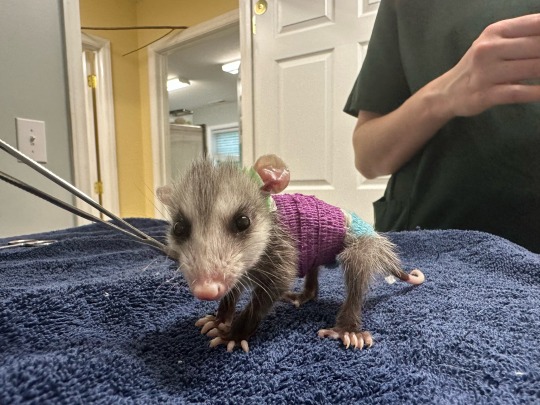
(This is a patient in the process of rehabilitation. She was admitted since her mother , her siblings , as well as herself was attacked by a dog. She has multiple puncture wounds , otherwise she is doing well!)
2K notes
·
View notes
Text

The Alaska SeaLife Center's rescued baby walrus has a name... Ukiaq! "Uki" is one of the only walrus calves ever successfully rehabilitated, thanks to the collaborative efforts of walrus experts from around the country. Due to her young age, Uki is not a candidate for release and will find her forever home at SeaWorld Orlando.
#an alternative to moo deng#she reminds me of tyonek#ukiaq#walrus#pinnipeds#marine mammals#wildlife rehab#alaska sealife center#seaworld
199 notes
·
View notes
Text
hi yall quick reminder- please don't use spiderweb outside to decorate this year!!! it's a severe risk of birds, bugs, and even mammals and reptiles to get stuck in and about 75% of our rehab cases in the coming months will be for this- use it inside as much as you want, but please keep it inside!! x
images of trapped animals below the cut for info- they survived though!


254 notes
·
View notes
Text
What I wish you knew about veterinary medicine:
We're in a suicide crisis.
We have a high rate of professional burnout.
I can't speak for veterinary school, but vet techs learn anatomy, diseases, anesthesiology, surgical assisting, pharmacology, emergency medicine, husbandry, radiology, diagnostic testing, parasitology, nutrition, preventative medicine, and behavior for cats and dogs. Then we do it all again for large animals and exotics.
Nearly all of us experience compassion fatigue at least once.
Please be kind to veterinary staff. We're not in it for the money. We love your animals and want the best for them.
#pets#cats#dogs#animal shelters#pet care#vet med#vet bills#vet tech life#vet care#puppies#kittens#wildlife rehab#pets of tumblr
33 notes
·
View notes
Text

Shout out to the time I had this southern flying squirrel (Glaucomys volans) loose in my house (escapee wildlife rehab patient) during the height of the pandemic
42 notes
·
View notes
Note
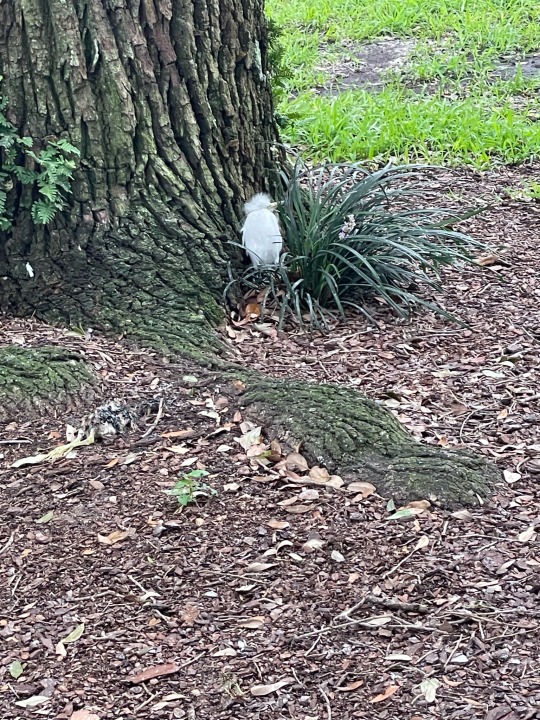
I found this young little blue heron on the ground behind this bush. Is it okay or is it screwed? Are the parents watching it? I’m just worried for them.
Little Blue Heron Chick
Hey, usually I would leave chicks alone. (Hopefully, it isnt too late).
Normally I would watch the chick form nearby and see if the parents are caring for the chick.
If they're not, I would usually call your local wildlife rehab facility, and see what they think. They'll tell you whether you should move it, leave it alone, or bring it in to the rehab center.
Here's a list of Rehab Centers across the US:
How to find a wildlife rehabilitator | The Humane Society of the United States
Find a Wildlife Rehabilitator in the U.S. - International Owl Center
88 notes
·
View notes
Text
Lil bat crunching a lil worm.
Note: I'm a wildlife rehabber volunteer and everything I do is under supervision. Like feeding this bat.
226 notes
·
View notes
Text
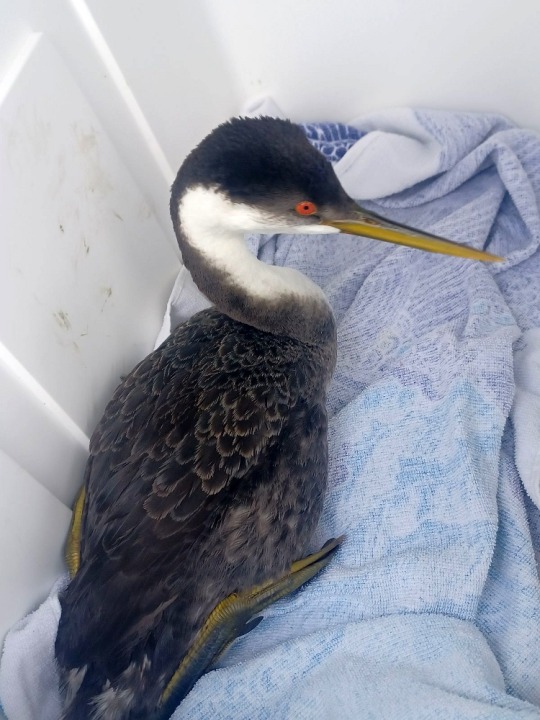
Today is apparently ANGRY STABBY BIRB DAY.
I was taking a walk on the boardwalk out near Bolstadt in Long Beach, when I came across this western grebe (Aechmophorus occidentalis) stranded on the path ahead of me. It looked alert and uninjured, so chances were just that it couldn't take flight off of the hard surface, but I called Peninsula Wild Care anyway to see if they wanted to bring it in for a checkup.
They quickly coordinated a couple of volunteers to meet me nearby, and I needed to get the grebe out of the way since a lot of people walk their dogs there and not all of them are on leashes. I figured okay, this is a relatively small bird, not as big as the muscovies I've carted around on the farm, and it seems calm, right?
NOPE. As I tried to gently reach for the grebe it turned from a calm, if confused pile of feathers on the decking to Stabby McStabberson, and I very nearly got jabbed and nipped a few times by a long, pointy beak attached to a surprisingly agile and very much NOT happy bird. I ended up having to take my hoodie off and dropping it over the entire grebe, and only when the lights were out could I bundle it up and carry it over to the meeting place.
Since it was pretty energetic, not obviously sick or injured, and its body condition felt decent (at least through the hoodie) I'm hoping it's going to get released soon enough after a checkup and a nice meal of fish. Many waterbirds have a lot of trouble taking off from hard surfaces because their feet are so far back on their bodies--which is great for swimming and water takeoffs, but not so helpful on land. If the bird had stayed stranded there they could have been injured or killed by another animal, or ended up dehydrated.
So let's hear it for Stabby the Angry Grebe, and wish them a good release back into the wild!
#grebe#western grebe#birds#birbs#birdblr#wildlife#animals#dinosaurs#avian#avian dinosaurs#Washington#Pacific Northwest#PNW#animal rescue#animal rehab#wildlife rehab#ecology#nature#conservation#migratory birds
859 notes
·
View notes
Text
If you fish, raise fish, or know of someone that fishes near Amarillo, TX, this rehab - Wild West Wildlife Rehabilitation Center - is looking for fresh caught donations of fish to feed a new rescue (I'm posting 7/14/24). Contact info below cut and on their website! Help them help a bird!
Ph. (806) 680-2483 e-mail: [email protected]
Operating hours: Monday-Friday 9a-8p Saturday/Sunday 10a-6p
33 notes
·
View notes
Text

#rabbit#lagomorph#mammal#animals#nature#wildlife rehab#animal rehabilitation#animal welfare#science#wildlife biology
188 notes
·
View notes
Text
A plan is now in motion to airlift the 2-year-old orphaned orca calf trapped in a Canadian lagoon following the death of its mother to a sea pen, in hopes of releasing it when its family (a known pod of Bigg’s transient orcas) pass by. This is similar to what was done with Northern Resident orca “Springer,” who was successfully released and has gone on to live a normal wild life (even raising two calves!) Best of luck to this baby and everyone involved!

161 notes
·
View notes
Text
Okay, this is…way outside of my usual.
First of all, animal tax for taking your time (more photos further down I can’t format worth anything lol)
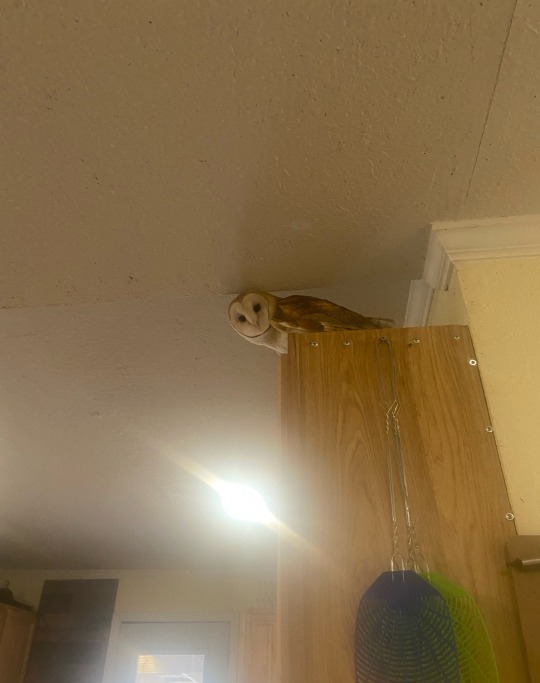
I volunteer with a local wildlife rehabilitation center. The only state, federal, and USDA licensed one in the upper 26 counties of the Texas Panhandle, although we have cared for animals from all over the state. We’ve had everything from half-tamed bengal cats come in from a hoarder’s house to a million and one orphaned starlings in our doors.
There’s always a lot of animals, no matter what, because unfortunately the education towards wildlife in this area is exceedingly poor and most people are either afraid of most animals or see them as nothing more than pests. We’ve had a fair number of animals shot, poisoned, trapped, the parents killed and then the land/homeowner finds the nest of babies…the list goes on.
To combat this, we have always pushed education. We have programs all across the area, we go to schools and churches and scout groups. We’re currently working on building an education building, both to give our educational ambassadors larger and nicer habitats to live in and to have a place to hold events for the community. As the founder of the center always says, “You can’t love what you don’t know”.
This building is by no means cheap. We’re getting close to having it fully funded, but we’re short by several thousand dollars.
Currently, we are having our biggest donation drive of the year, and our goal is to try to have most of the education building paid off from this. We’re also having a bit of a friendly competition among the volunteers to see who can get the most donations.
The best part of this is no matter how small the donation may be, we have donors who are going to amplify the donations. So even if you only give a small amount, it will be worth a lot more!

To donate, go here.
Thank you in advance to everyone who gives or reblogs to spread this!
The promised animal tax:
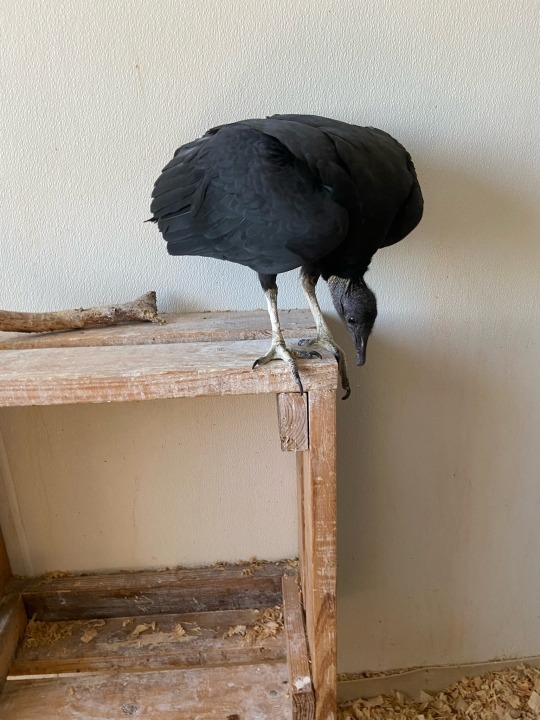
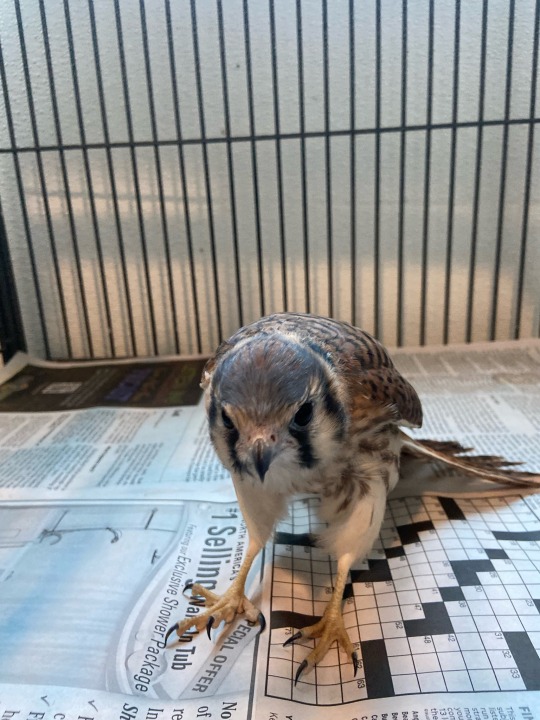
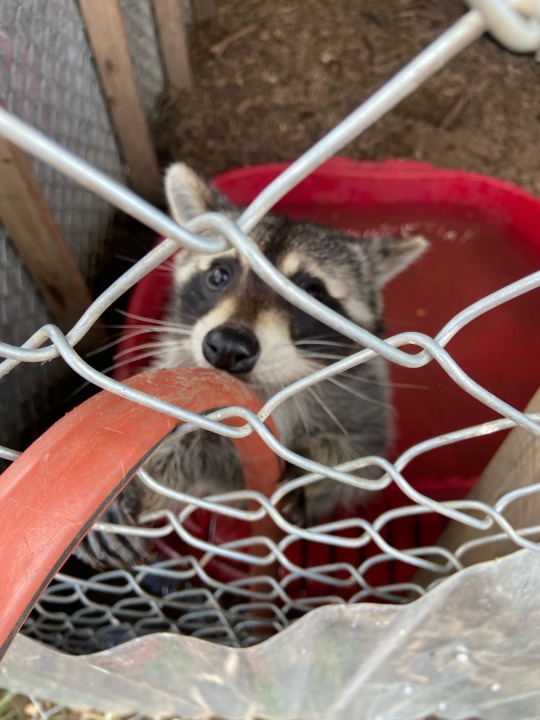
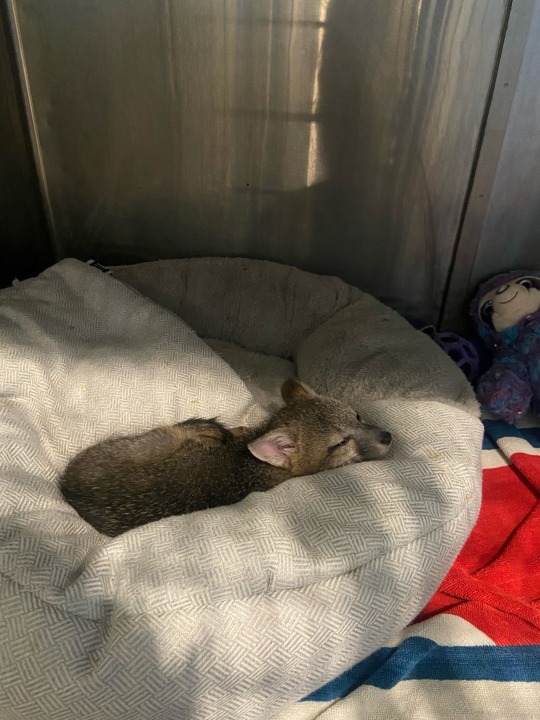
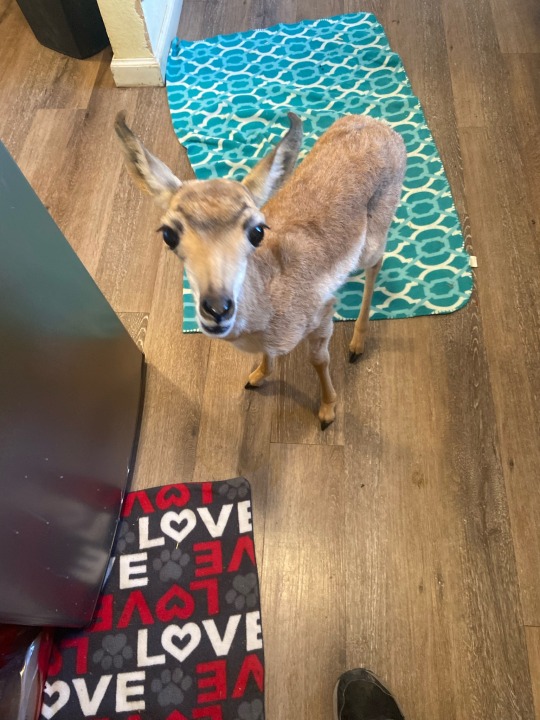
#cute animals#wildlife rehab#wildlife#wild animals#wildlife rescue#animals#raccoon#owl#pronghorn#vultures#vulture#black vulture#barn owl#fox#grey fox#gray fox
80 notes
·
View notes
Text
its not nesting season yet in most of the northern hemisphere but i just saw someone spreading misinfo on a post so PSA that birds don't reject young that have been touched by humans. thats a myth made and upheld by parents who dont want their kids touching birds (there are actually very few diseases humans can get from birds, and bird lice cant live on humans)
birds dont recognize their young by smell (most birds have similar sense of smell to humans, if not worse), and even if the parents see a human handling their young, theyll come back to check on the babies after the humans have left.
so if you happen to find a nestling (young baby bird that should still be in the nest. eyes often closed, usually cant stand up, feathers not all in. examples under this text section), and you know where its nest is, its totally safe to pick it up and put it back in
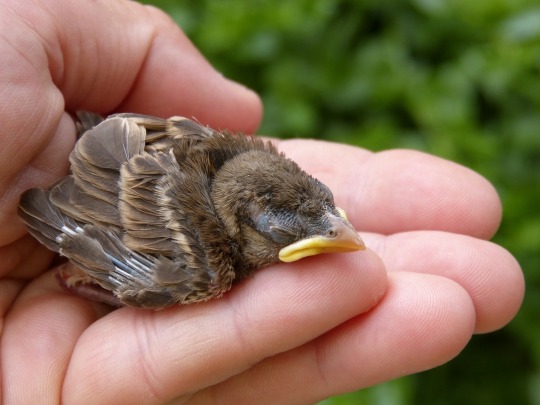
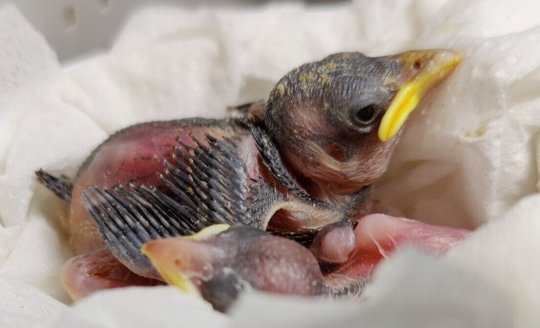
however, if you find fledgeling (older baby bird. feathered by still has some fluff, alert but just seems to be sitting by itself and not moving. ex: the guys below), youll probably want to leave it alone. Theyre supposed to be out of the nest and are still being fed by parents, they just tend to sit still for the first couple days until they learn how to fly. Unless it's injured or in immediate danger (cats, cars, etc) it should be left alone so its parents can continue guiding it

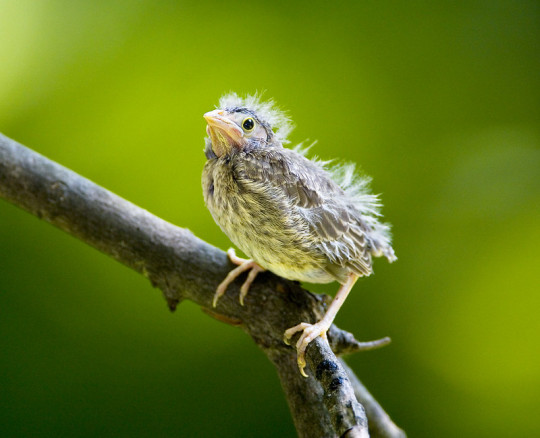
if you're not sure whether a bird is injured or needs help, or if you know it needs help but arent sure what to do, you should contact a local wildlife rehabber and get their advice, and theyll be able to take the bird in if it needs medial attention.
A lot of countries have registered rehabbers' contact info listed somewhere on their wildlife department's website, and if youre in the US, ahnow.org is a good site to quickly find rehabbers and rehab centers in your area (works for animals that arent birds also). If you're in a country or area without access to rehabbers, you may be able to ask a vet for advice and assistance as well (I've also seen people get pretty decent direction from r/whatsthisbird on what to do in certain areas without rehabbers or vets, so that may also be a helpful, if possibly last resort, supplement. At the very least they can tell you what bird you're dealing with)
Additional note that a lot of rehabbers and rehab centers are willing to have someone drive out to where you are if youre unable to drop off an animal yourself, so that's something worth asking about if transportation is an issue for you
61 notes
·
View notes
Text
the last several nights, it's been spotted eagle owl & african wood owl calling...& seems cape bulbul season has begun, as they are checking out the nectar feeder (whenever my dog isn't on the stoep & sunbirds aren't chasing them away from the tasty juice)!
plus, got a call from our local vet tech (who also works with wildlife at the domestic practice) yesterday, that a white-fronted plover was brought in...my study species!
JUST LOOK AT THIS CUTE LIL' PRECIOUS BB!! 🤩😻

probably a young adult female, & is likely the progeny of the regional population i did extensive research on for my postgrad.
i helped develop a treatment plan for it (since shorebirds are very sensitive species, infamous for being difficult to treat/rehab, & notorious for doing poorly in captive care), & methods to prevent any further issues, until the mystery weakness & lameness it's presenting can be determined as botulism, capture myopathy (stress-induced muscle cramping that can turn fatal), or something else entirely.
*insert cliché, sentimental "it's moments like these..." statement here*
#but really it IS moments like these#bird species i have worked with#not just a bird nerd by way of liking/having an interest in birds/birding#birds are my career & passion & life#birding#birdwatching#birding from home#owls#bulbul#sunbird#plover#shorebirds#shorebird#shorebirder#MY BBS#wildlife rescue#wildlife rehab#wildlife care#aves playeras#waders#wader#birds#aves#birdblr#Wader Wednesday#WaderWednesday#Shorebird Sunday#ShorebirdSunday#Charadriiformes#bird nerd
5 notes
·
View notes